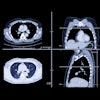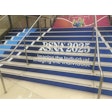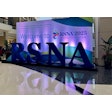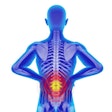AI risk scoring from only medical images could help better predict five-year breast cancer risk over breast density alone, according to research to be presented November 30 at the 2025 RSNA annual meeting in Chicago, IL.
In her presentation, Christiane Kuhl, MD, PhD, from RWTH Aachen University in Germany, will discuss her team’s study of how shifting from average (<1.7% 5-year risk) to intermediate risk (>1.7%-3% 5-year risk) based on this approach would double breast cancer risk estimations -- thus identifying cancer earlier.
"Our findings support the use of image-only AI as a complement to traditional markers supporting a more personalized approach to screening," Kuhl said.
Prior studies suggest that applying AI to breast density measurements can better stratify risk and reduce report variability for women with dense breasts. In recent years, Kuhl has led research into AI and imaging’s role in assessing breast density and cancer risk via studies that have analyzed the performance of imaging-based AI models for predicting risk and how abbreviated MRI can be used successfully in women with dense breasts.
The investigators compared the performance of an image-only AI model with that of breast density in stratifying five-year breast cancer risk. They also studied whether AI-derived risk adds predictive value beyond density. The model was trained on nearly 421,500 mammograms from 27 facilities in Europe, South America, and the U.S.
 This figure illustrates how AI can extract the full spectrum of predictive information directly from a mammogram, moving beyond the single measure of breast density. While breast density has long been used as a risk factor, it captures only limited information. By contrast, AI analyzes the entire image to provide a personalized five-year risk score, offering a more precise and comprehensive approach to identifying women at increased risk of breast cancer, researchers said.RSNA
This figure illustrates how AI can extract the full spectrum of predictive information directly from a mammogram, moving beyond the single measure of breast density. While breast density has long been used as a risk factor, it captures only limited information. By contrast, AI analyzes the entire image to provide a personalized five-year risk score, offering a more precise and comprehensive approach to identifying women at increased risk of breast cancer, researchers said.RSNA
Breast density alone achieved a hazard ratio (HR) of 1.16, representing a modest improvement in identifying cancer risk. Compared with average risk, moving to intermediate risk or to high risk led to HRs of 2.06 and 4.49, respectively, regardless of density.
For combined AI-derived risk and breast density, the increased risk for breast density adjusted for AI risk was 1.12. And raised risks for AI intermediate-risk and high-risk categories adjusted for density were 2.04 and 4.47, respectively.
With these results in mind, the team highlighted that including image-based risk assessment from AI could improve decision-making in screening programs by identifying women at higher five-year risk. It added that this could help better inform supplemental imaging and prevention strategies.
“These findings support [AI's] use as a complement to traditional markers for guiding personalized screening,” Kuhl said in an RSNA statement.
Constance Lehman, MD, PhD, from Harvard Medical School in Boston, MA, said that AI image-based risk scoring could help identify high-risk women more accurately than traditional methods and determine who may need screening at an earlier age.
“We already screen some women in their 30s when they are clearly at high risk based on family history or genetics," she said. "In the future, a baseline mammogram at 30 could allow women with a high image-based risk score to join that earlier, more effective screening pathway."




















